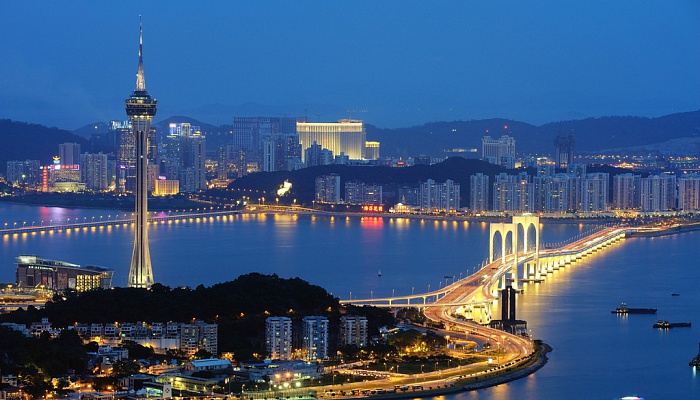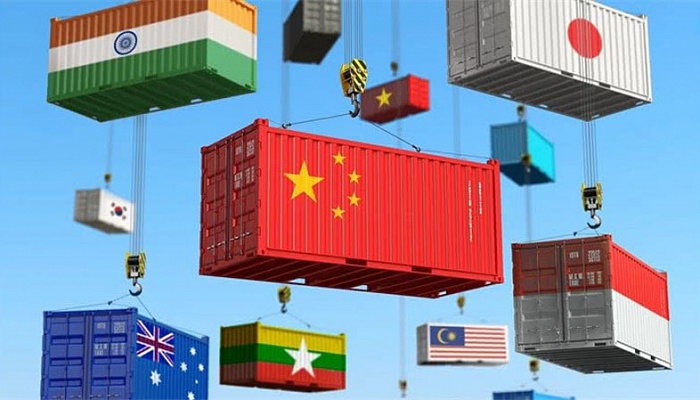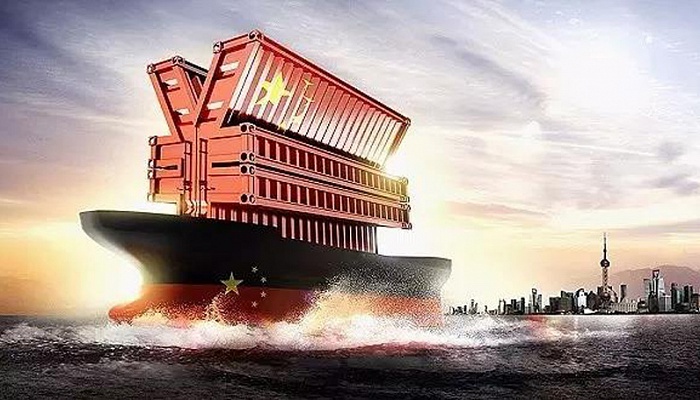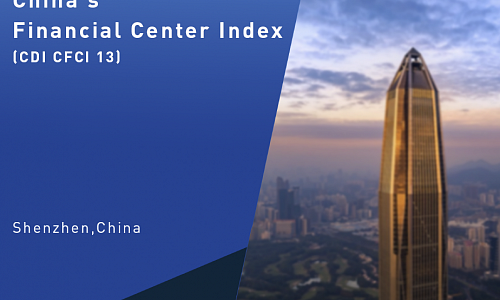
Winning proposition
Author: ZhangYuge, Director, Hong Kong and Macao Research Department, CDI
Macao should take advantage of the plan to develop the Guangdong-Hong Kong-Macao Greater Bay Area to diversify its economy.
Macao has realized prosperous and stable socioeconomic development since its return to the motherland. However, moderate economic diversification is the key to better implementing the "one country, two systems" principle in the future.
Since the Macao Special Administrative Region government released policies to promote economic diversification in 2004, its economic landscape has not changed much. Macao still has a long way to go in economic diversification. Statistics published by the SAR show that the added value of gambling (including intermediary industries) accounted for 50.5 percent of Macao's GDP in 2018, 4.3 percentage points higher than 2004; in terms of tax revenue, gambling generates 113.5 billion patacas ($14.1 billion) in recurrent income and capital income, making up 80.3 percent of the SAR's total.
Moderate economic diversification is the future for Macao. But how? It will not be achieved solely on Macao's own strengths. Macao needs to ride the momentum of the plan to develop the Guangdong-Hong Kong-Macao Greater Bay Area. On the one hand, it should seek to attract resources from the Greater Bay Area to develop industries independent of gambling; on the other hand, it should develop a headquarter economy to get into the Greater Bay Area market and develop competitive industries.
In the first place, it should develop its financial industry. The traditional manufacturing industry and the service industry are not able to compete with the gambling industry with regard to profitability. The best choice for an alternative is therefore the financial industry. Monte Carlo serves as a good example for this. Macao should take into consideration its own strengths and weaknesses in positioning itself among neighboring cities such as Hong Kong, Shenzhen and Guangzhou.…
Read more...RCEP Can Give Boost to International Trade
Author: ZhangGuoping, Postdoctoral Researcher, CDI
India’s sudden withdrawal has hit negotiations involving 16 countries of the Regional Comprehensive Economic Partnership treaty, which is expected to conclude this year. The RCEP is a proposed free trade agreement between the countries of the Association of Southeast Asian Nations, and six states with which ASEAN has FTAs.
China needs to remain…
Reform is key to Shenzhen's new mission
The decision by China's central leadership to lift the status of Shenzhen from a special economic zone to a pilot demonstration area has underscored the country's intention to undertake bolder economic, administrative and legal reforms and to explore a new and unique development path to foster high-quality growth, experts said.
The southern Chinese city has developed from a small fishing village…
On Forced Technology Transfer, US is Mistaken
Author: Fan Gang, President of CDI
Editor’s Note: The US administration under President Donald Trump has resorted to bullying, hindering China's progress and suppressing Chinese companies with unreasonable excuses, one of which is that China has stolen the United States' research findings and technologies. China, which has adopted reasonable approaches to obtain technologies, finds the accusation…
Pillars of Support
Author: Liu Xiang, Executive Director, Department of Regional Development and Planning, China Development Institute
Editor’s Note: Chinese investments in Africa should promote industrialization and strengthen the continent's self-development capacity. In recent years, China-Africa cooperation has been hit by Africa's uneven development, Africa's inability to develop itself and its debt crisis…
GBA and New Stage in China’s Urbanization
Author: Fan Gang, President of CDI
Editor’s Note: The Guangdong-Hong Kong-Macao Greater Bay Area (GBA), an effort to usher in new stage of urbanization, has great potentials because of the special roles of HK and Macao and its innovation-driven development.
China’s major strategic plans in recent years include the Guangdong-Hong Kong-Macao Greater Bay Area (GBA), the integration of Yangtze…
BRI Projects in ASEAN: Implementation, Mechanism and Suggestions
Author: Zhang guoping, Postdoctoral Researcher, CDI
As a key strategic partner of China, ASEAN is an important participant in the development of the Belt and Road Initiative (BRI). ASEAN has made a commitment to link its Master Plan on ASEAN Connectivity 2025 with the BRI and accelerate its infrastructure development on the great momentum brought about by the BRI. At present, the BRI has…
Late-Development Advantages Help China
Author: Fan Gang, President of CDI
Knowledge spillover from developed countries means cheaper learning costs that can be applied to all sectors. A country's growth is not only driven by labor, savings and capital accumulation, but also by technological progress and institutional reforms.
Cheap and abundant labor is the most often-mentioned comparative advantage of developing countries. However,…
It Is Not a Shame for Less Developed and Developing Countries to Imitate Developed Ones
Author: Fan Gang, President of CDI
Editor’s Note: Development is a long and arduous process. Regardless of the external environment, the most important thing for China is to do its own job well, including deepening institutional reforms, adhering to opening-up, and continuing to learn from advanced economies and bringing in new technologies. With the incidents of ZTE and Huawei, China must start…
Data-driven Economic Transformation Towards a New Round of Economic Growth
Author: Cao Zhongxiong, Executive Director of New Economy Research Department of CDI
Editor’s Note: Among the latest trends of innovation-driven development in today’s world, digitalization has become one powerful driver of global development and has profoundly affected the way of production and the way of life. In the digital age, China’s economy and society are also moving towards high-quality…
Shenzhen and Hong Kong “Twin City” Cooperation to Jointly Build an International Technology…
Author: Guo Wanda, Executive Vice President of CDI
Editor’s Note: In future in-depth cooperation, Shenzhen and Hong Kong will synergize their strengths in science and technology innovation in building an international science and technology innovation center.
In a mere four decades, the concept of Shenzhen-Hong Kong “twin cities” has been felt across many sectors, including daily life, economy,…
Development and Operation of Overseas Industrial Parks under BRI
Author: Shi Kun, Senior Research Fellow, CDI, Mandy Zeng, Research Associate, CDI
Editor’s Note: Overseas industrial parks can become China’s contribution to the Belt and Road Initiative (BRI).
To promote economic development through industrial parks
Industrial parks represent a country’s effort to achieve industrial agglomeration and participate in the global industrial division of labor in…
Shift of Shenzhen’s Development from Imitation to Independent Innovation
Author: Fan Gang, President of CDI
Editor’s Note: Since reform and opening-up, Shenzhen’s development has experienced two stages. Now it is entering a new stage of imitation plus independent innovation.
The first two decades of Shenzhen’s development are characterized by comparative advantages, i.e., cheap labor and development of labor-intensive industries.
The next two decades of Shenzhen’s…
BRI and Going out of Chinese Special Economic Zones
Author: Qu Jian, Vice President of CDI
Editor’s Note: Over past years, Shenzhen has taken the lead in China’s industrialization and urbanization with open economic thinking, leading to a substantial rise in Chinese people’s income. In the future, the development of China’s special economic zones under the Belt and Road Initiative will mean the going out of Shenzhen’s successful experience and…
China-India Cooperation on Biotech and Pharmaceutical Industries
The report is aimed at helping policymakers enhance understanding about the policies related to the pharmaceutical and biotech industries of China and India.
Overview
China has become the third largest pharmaceutical market worldwide and gained strong research capabilities in gene testing, cell therapy, and bio-pharmacy. Nevertheless, excessive regulatory control and dilatory approval procedures…
China's New Development Stage: Challenges and Opportunities
Author: Fan Gang, President of CDI
Editor’s Note: China’s new development stage has many features: independent innovation has become a new growth pillar; the domestic consumer market has grown steadily; large city clusters have gradually formed; green development has become an inevitable trend; and private businesses urgently need to find a way out. On the whole, although China in 2019 will face…
About China-U.S. Trade Frictions
Author: Fan Gang, President of CDI
Editor’s Note: China and the US have achieved substantial progress following their several rounds of high-level trade talks. The two countries are striving to reach a win-win agreement. What are the causes and effects of the trade frictions? More importantly, what are the solutions to break the impasse?
What are the causes of trade imbalance between China and…
China’s Shifting Economic Landscape
Author: Fan Gang, President of CDI
Editor’s Note: The current slowdown in China's economic growth, while affected by the overall global economic sluggishness, is also inseparable from a number of overheating in China's own development process.
China’s emergence as an economic powerhouse is mainly determined by its own national conditions, not by the international landscape. At present, China…
New Attempts and Practices in Development Plan Outline for Guangdong-Hong Kong-Macao Greater Bay…
Author: Zhang Yuge, Director, Hong Kong and Macao Research Department, CDI
Editor’s Note: The Development Plan Outline for the Guangdong-Hong Kong-Macao Greater Bay Area has been unveiled. What new attempts and practices in the Outline are worth attention?
The highly anticipated Development Plan Outline for the Guangdong-Hong Kong-Macao Greater Bay Area (hereinafter referred to as “the Outline”)…
Macro control Shall Be Adopted in Face of Economic Fluctuations
Author: Fan Gang, President of CDI
Editor’s Note: The structural reform on the supply side and the macro control on the demand side run parallel to each other in face of economic fluctuations.
China still faces institutional defects, which necessitates institutional reform on the supply side. Supply-side structural reform is a long-term measure. In many cases where long-term structural reforms…




























